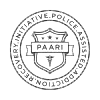
By LYLE R. FRIED, CAP, ICADC, CHC In Social Issues
Posted November 12, 2017
You’ve heard of the United States’ opioid epidemic. You’ve read the grim statistics: Americans are dying of drug overdoses at higher rates than ever before, and the numbers keep climbing. Perhaps you’ve experienced the epidemic all too personally, as it’s reached you or your loved ones.
But how did the situation get so critical?
When you think of the opioid epidemic, drugs like heroin and fentanyl may be the first that come to mind. However, opioids also include prescription pain relievers such as oxycodone, hydrocodone, and codeine. Not only are these drugs powerfully addictive, but they also frequently serve as a gateway to cheaper, more potent opioids like heroin and fentanyl.
The Pain Epidemic
The opioid epidemic is closely tied to another epidemic: chronic pain. Chronic pain impacts an estimated 100 million Americans, and effectively treating this pain has long been a challenge.
Opium, both its benefits and its dangers, has been known for centuries. In the early 1900s, morphine addiction caused substantial social problems. For the 50 years that followed, American doctors prescribed opiate-based drugs only rarely.
Doctors often prescribed high doses of aspirin to treat pain, which wasn’t particularly effective. By the ‘70s and ‘80s, compassionate doctors were seeking better pain relief for their patients. Pharmaceutical companies saw an opportunity and took it.
Around this time, in the ‘80s and ‘90s, several pain societies dedicated to advocating for pain relief were developed, including the American Pain Society. The latest research suggested that opioids may not be as addictive as once believed, and government recommendations reflected this new information.
In the late 1990’s, Pain as the 5th Vital Sign (P5V5) was rolled out, emphasizing pain assessment during patient evaluations. Doctors began prescribing drugs containing opiates at enormously high rates. Instead of only prescribing opiates for chronic pain sufferers, doctors also prescribed these highly addictive drugs to treat minor pain.

Oxycontin, a time release version of oxycodone, reached the market in 1996. Purdue Pharma spent $207 million on marketing for the launch, aggressively targeting both consumers and doctors. They emphasized that the risk of addiction was minimal due to the pill’s time release formulation, and the drug was treated like a miracle for pain sufferers. Doctors who hesitated to prescribe drugs like Oxycontin were ridiculed and vilified.
In time, Oxycontin became one of the most abused prescription drugs in history, and it’s estimated to cause 100,000 drug-related deaths worldwide annually.
And from 1991-2011, the number of opioid prescriptions for pain in the United States skyrocketed from 76 million to 219 million.
Pain Clinics and the Opioid Epidemic
Even well-meaning doctors were prescribing prescription opioids at alarming rates, often in cases where other medications or therapies would have sufficed. Addictions formed, and addicts started script-shopping, seeking doctors who would easily prescribe prescription pills.
Scores of other, less well-intentioned doctors recognized the enormous profit potential in prescribing opioids quickly and with little to no hassle. Pain clinics, also called pill mills, opened across the country, providing unneeded prescription pain pills to addicts and dealers.
These pill mills were especially abundant in Florida. Flights to Florida to stock up on prescriptions and then sell them for double or triple the profits were so common that they were nicknamed the Oxycontin Express.
In 2010, Florida responded by shutting down major pill mills.
From 2010-2015, deaths from oxycodone dropped by 69%. At the same time, heroin deaths more than doubled in 2014 alone. Similar numbers were reported across the country. The pain clinics had been shut down, but millions of opioid addicts remained.
What Next?
The issue of pain management and opioid addiction is complicated. Many people do suffer from chronic pain and rely on opiate-based medication for pain relief and improved quality of life.
But experts believe healthcare providers in the United States are poorly prepared for managing pain. The data doesn’t favor long-term use of opioids, and other options should be explored, such as physical therapy, acupuncture, or alternative and complementary medicines.
While the opioid epidemic may have its roots in compassion for pain sufferers, the resulting greed and its devastating effects are apparent.
A solution to the opioid epidemic is unclear, but addressing how doctors manage pain could be a starting point.
If you or a loved one is suffering from opioid addiction call The Shores Treatment and Recovery at 1-888-249.2590.












